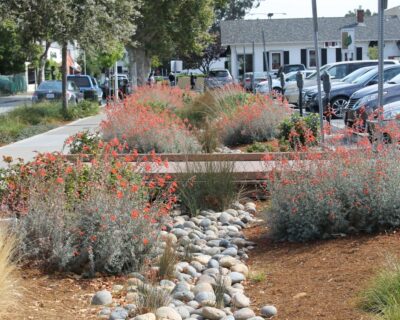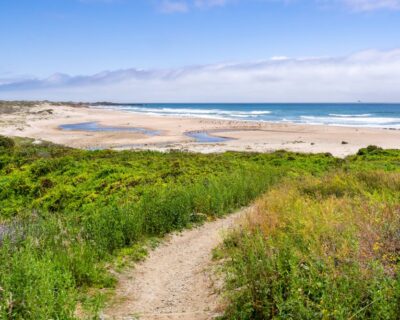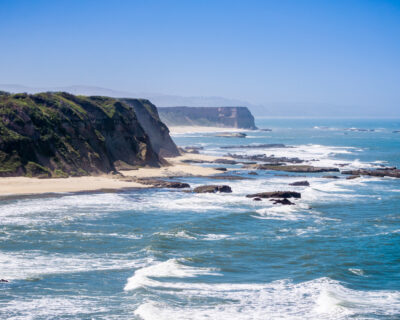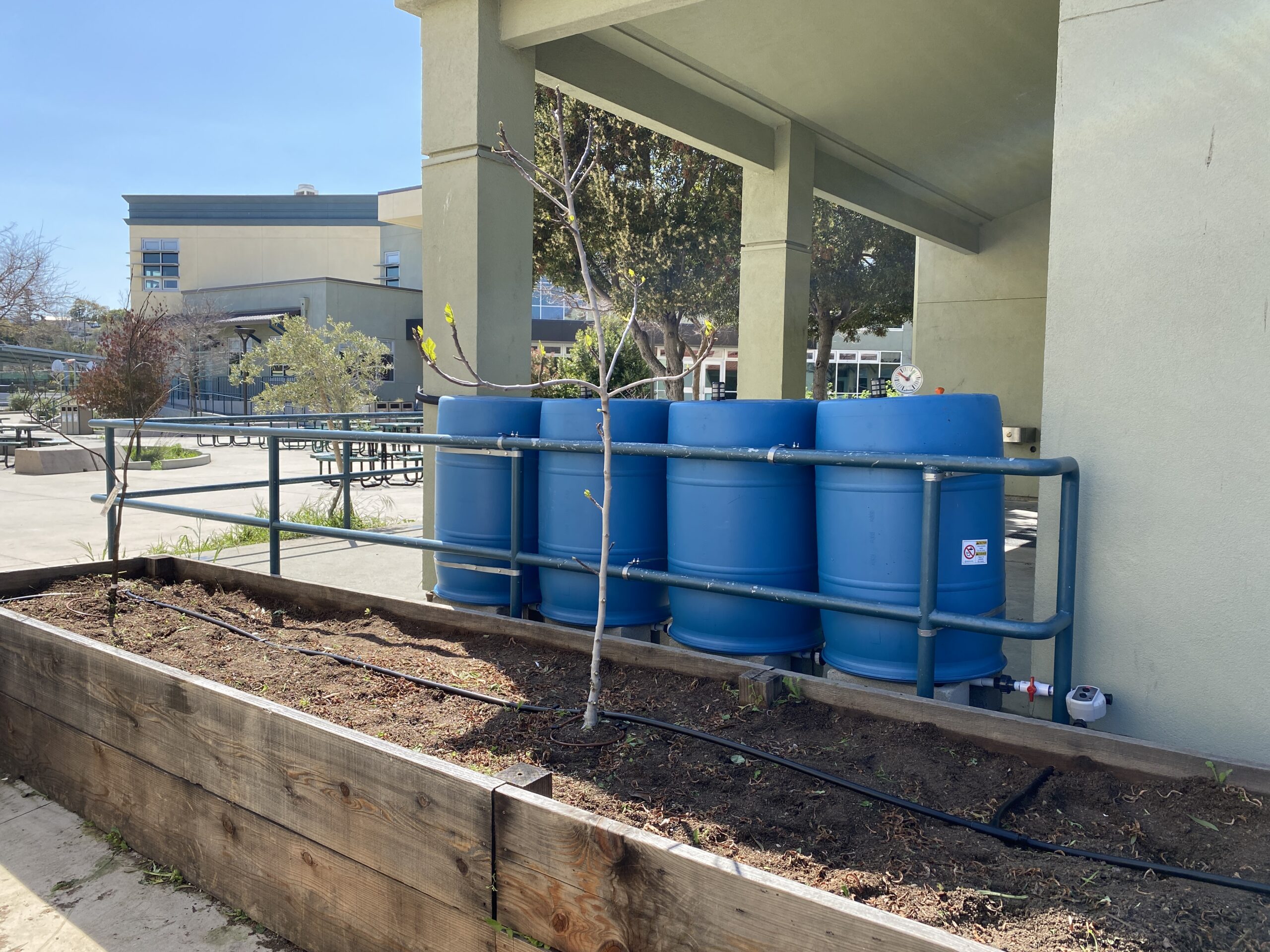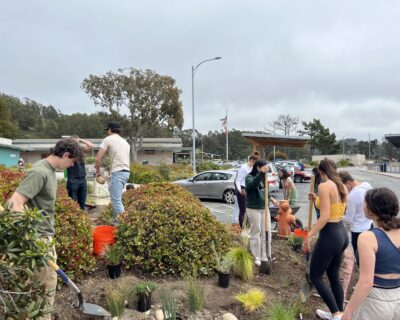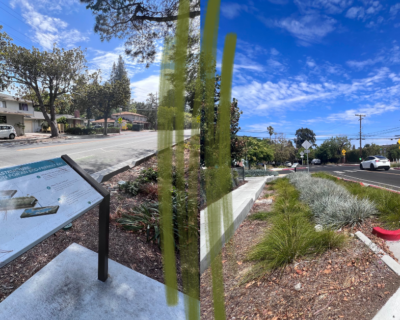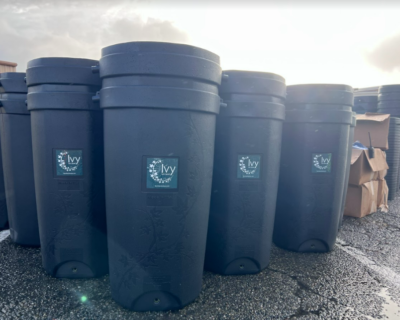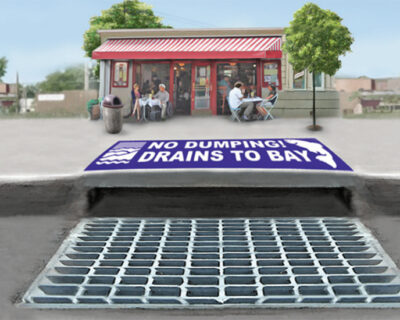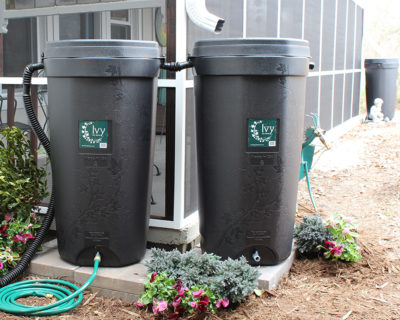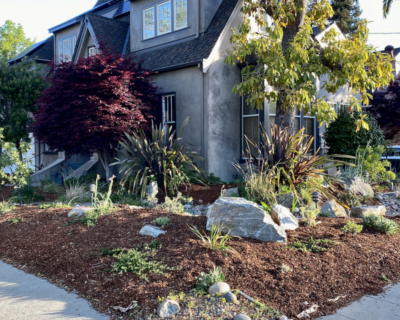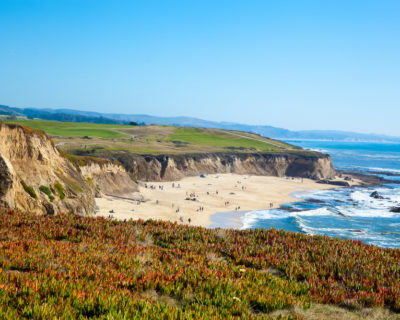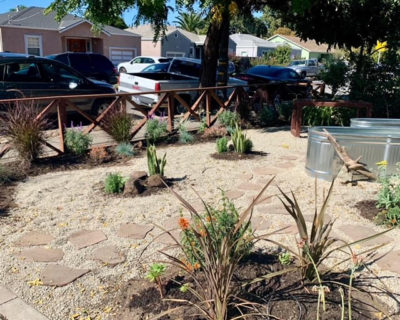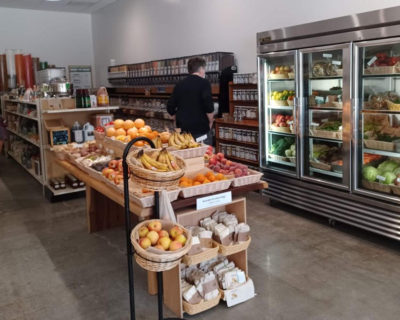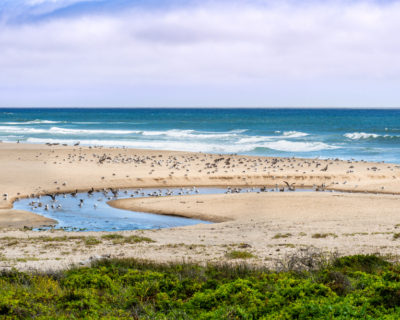California appears to be on a collision course with climate change-related precipitation impacts.
At times, we may see extended periods of drought (like the seven-year dry spell from 2011-2017). Or, conversely, we may be hit by seemingly endless bouts of thick veils of rain. Likely, we’ll experience a mix of conditions and with less and less predictability as the climate continues to show signs of destabilization under various extremes linked with an overall warming trend and evermore greenhouse gases filling the atmosphere.
A new UCLA study published in the journal Science Advances, and featured in a San Francisco Chronicle article, showed we can expect as much as 40% more precipitation (in the form of rain and snow) in the Sierras and increased local rainfall in the Bay Area by as much as 20-30%. According to the study, large channels of airborne moisture drawn off of the oceans, aptly named “atmospheric rivers,” are due to become bigger and more intense, causing a drastic increase in precipitation in the coming years.
In short—“Oh, it surely looks like rain” (to borrow the Grateful Dead’s lyrics).
Even more locally, the San Mateo Countywide Water Pollution Prevention Program (a program of the City/County Association of Governments of San Mateo County or C/CAG) has done its own downscaled climate modeling as part of a climate adaptation planning grant funded by Caltrans. The goal of this modeling was to develop a Countywide Sustainable Streets Master Plan to identify and prioritize opportunities for building green stormwater infrastructure on public roads throughout the county.
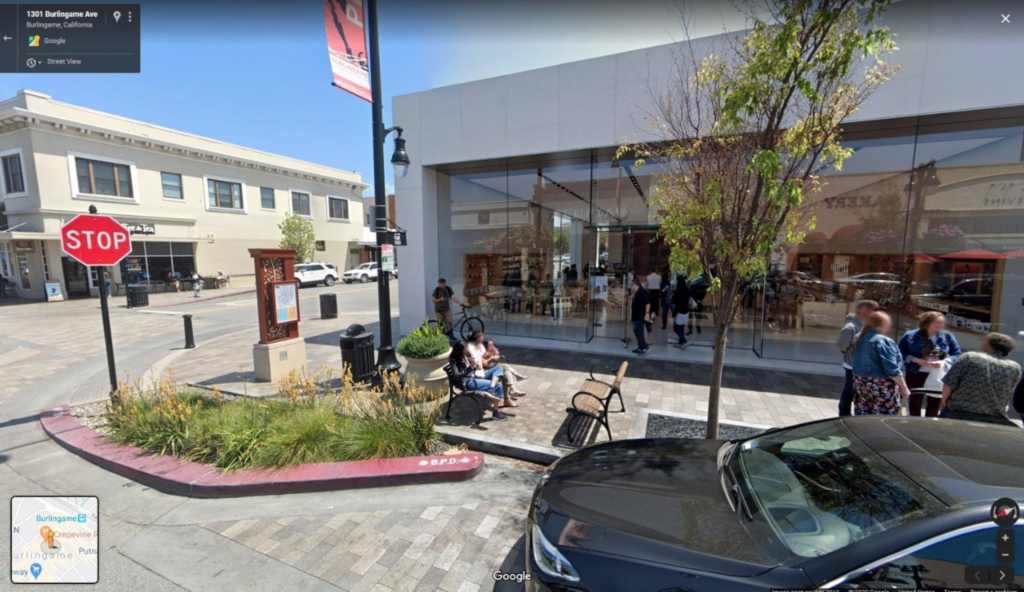
Green stormwater infrastructure (or GSI), such as in the Burlingame example pictured above, include specialized landscapes that help capture, store and clean urban runoff before it filters back into the ground or flows into nearby waterways. The Sustainable Streets Master Plan is primarily a countywide planning effort to identify high priority opportunities for linking GSI with transportation improvements, such as enhanced crossings at busy intersections, and to match opportunities with funding and implementation mechanisms to help get projects built. But the Sustainable Streets Master Plan takes the current thinking around green infrastructure for stormwater management a step further by modeling how rainfall and urban runoff patterns will likely change with the effects of climate change.
This plan considers a suite of factors to help rank project opportunities with an eye towards building safer, more resilient and comfortable streets. Opportunities are ranked higher or lower depending on things like whether a sustainable street project could protect against future flooding, reduce urban heat island impacts, fill gaps in urban vegetation, support water quality objectives and address issues of equity. The project also quantifies future runoff conditions to build the case for using GSI to adapt to climate change impacts from more intense rainfall.
A key aspect of the project is to model the impacts of future climate change, quantify those impacts, and determine the projected benefit of building more GSI to safeguard against increased rainfall.
Similar to the results from the UCLA modeling on atmospheric rivers, the modeling done in San Mateo County shows predicted increases in large storms, both in terms of the size and the frequency. With a focus on adapting streets to future precipitation impacts, the modeling was further refined on a watershed basis to specifically quantify changes in roadway-associated runoff. The modeling predicts elevated roadway runoff for all modeled storm sizes, including 2-, 5-, 10-, 20-, 50- and 100-year storm events. For reference, a theoretical 2-year storm, and the associated volume of rainfall associated with that storm size, has a statistical probability of occurring once every two years, or said another way, a 50% chance of occurring in any given year.
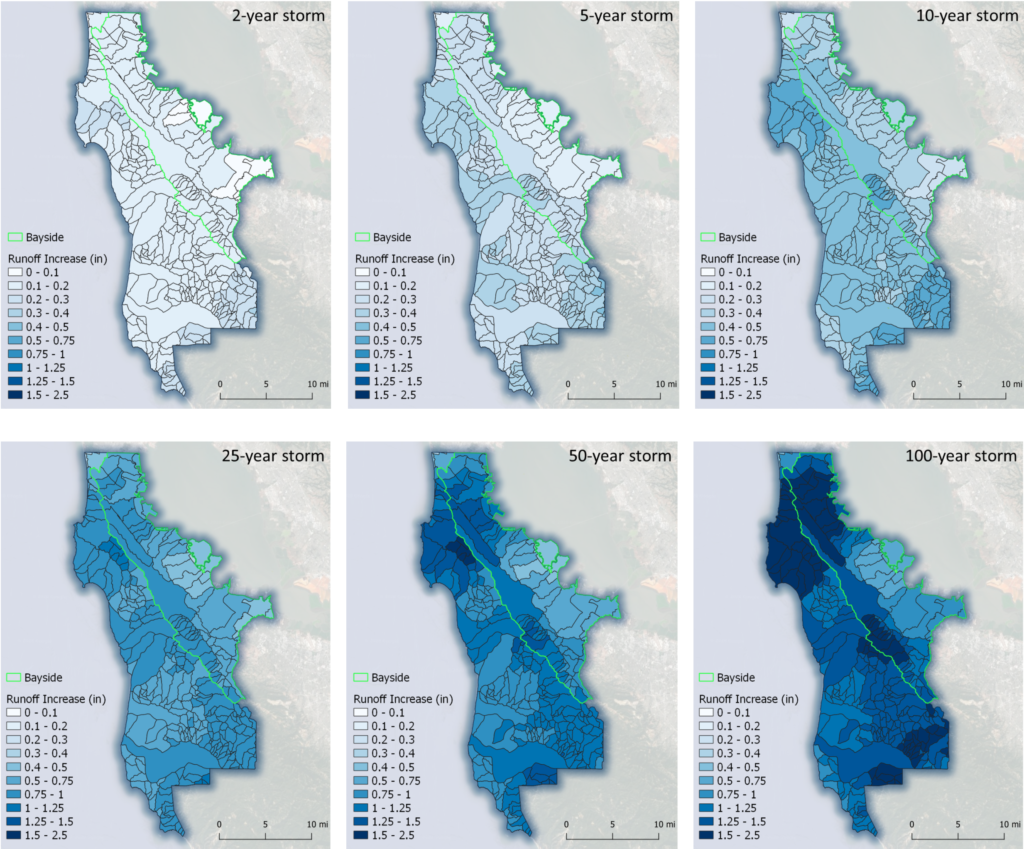
Even for smaller storms like a theoretical 10-year storm (the typical storm size used in engineering designs for stormwater infrastructure such as pipes and pump stations), we are likely to see increases in runoff depths of up to 25% around the county under future conditions.
Large storms, such as 50- or 100-year storms—predicted to occur once or twice a century—could dump significantly more rain than their historical counterparts. During one of these future behemoth storms, local communities could see upwards of 50% increases in stormwater runoff.
If three inches of rain (which is a large storm by any measure in the Bay Area) is enough to cause serious flooding now—just imagine what six inches could look like!
These results are nothing to take lightly, especially as storms become more intense and potentially longer in duration. Not to mention the possible complications of sea level rise, periodic extreme heat, increased risk of wildfire at the urban-wildlife interface, etc., all of which could lead to a “perfect storm” of climate change-related hazards.
Another recent study, this one out of Stanford and also reported on in the San Francisco Chronicle, paints a similarly unfortunate picture of future Bay Area traffic and commute delays, caused in this case by rising seas. Add a storm surge to just 12 inches of sea level rise (which could easily be the reality within a few decades) and communities in the North Bay in particular could be stuck with an additional 30 minutes or more of gridlock due to roadway flooding.
All this sounds pretty dire, right? There’s an upside. The Sustainable Streets Master Plan also looks at the benefit in terms of water managed by GSI projected to be built by the year 2040 for the purposes of improving water quality in San Francisco Bay, and it’s promising to see that for future scenarios, planned green infrastructure may help lessen the burden of bigger deluges. As shown in the chart below, planned green infrastructure could potentially manage most—or even all—additional runoff predicted for smaller storm events when accounting for climate change.
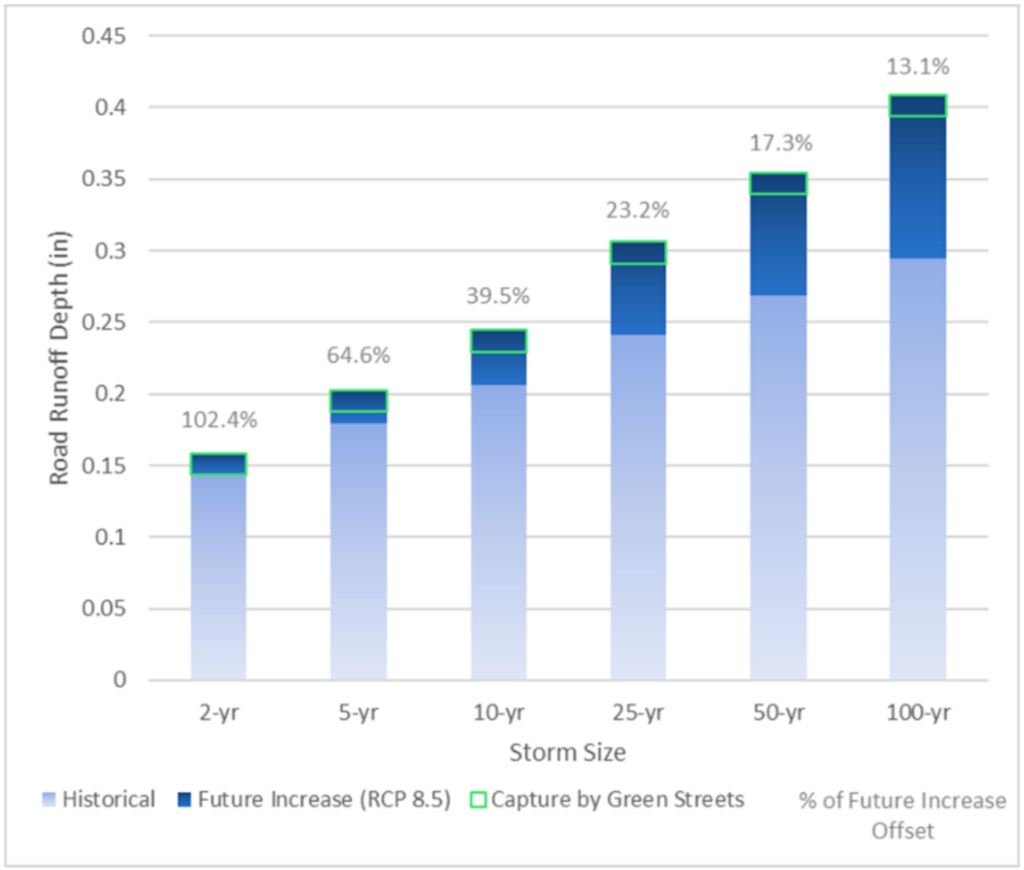
The big caveat here is that GSI can be expensive to build and maintain, especially without local dedicated funding. Urban greening, however, seems to be garnering broad support among communities region-wide, which can help with future funding initiatives.
As San Mateo County plans for the future now, it is dedicating resources to take action with adaptive solutions. A major step towards greater resiliency was the formation of the San Mateo Flood and Sea Level Rise Resiliency District, OneShoreline, last year. OneShoreline is charged with addressing future impacts from sea level rise, flooding, coastal erosion and regional-scale stormwater issues. The County has also made major strides with its Sea Level Rise Vulnerability Assessment and the follow-on adaptation planning work under the Climate Ready SMC campaign. The Sustainable Streets Master Plan, led by C/CAG and the San Mateo Countywide Water Pollution Prevention Program, is also advancing climate adaption by identifying linkages between transportation planning and prime opportunities to manage stormwater more sustainably, with a focus on adapting to the much larger storms of the future. Read more about green streets and the Sustainable Street Master Plan here. If you’re interested in staying informed on the progress of the Sustainable Streets Masterplan, please make sure to sign up for e-newsletter here. Have questions or thoughts about anything mentioned here? We would love to hear from you! Contact us today.

